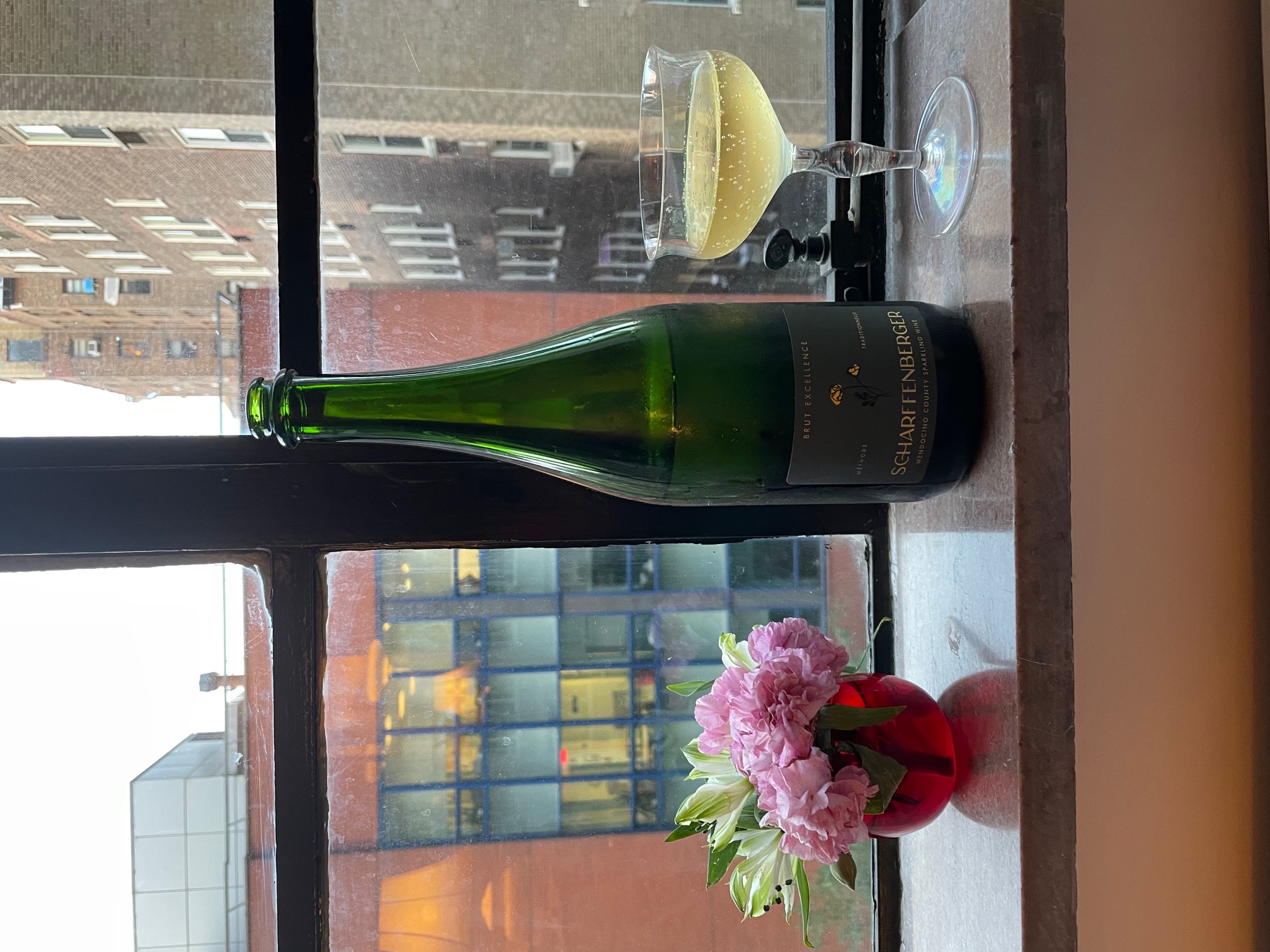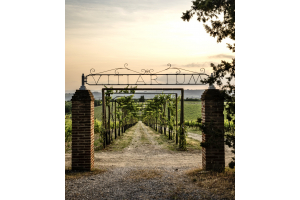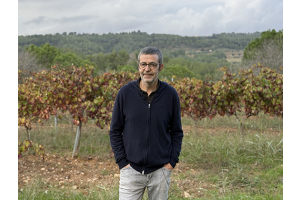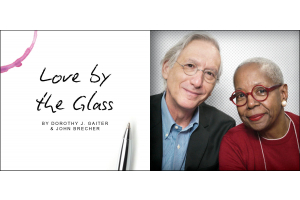Every January, we smile at the first sightings, regular as clockwork: people in new running outfits, determined this year—after perhaps other false starts—to finally get into the habit of running. We nod at each other, recognizing the new class of hopeful souls, and silently wish them success.
New Year’s resolutions can be difficult to honor. Committing to the gear can only get you so far.
 If your new interest is wine, you’ve selected a challenging time to dive in. Some beverage alcohol drinkers are embracing Dry January, a pause from imbibing that’s intended as self-care. We say, good for them if that’s what they want to do. They’re adults. In all things, one should act responsibly. Personally, we are more aligned with the Gentle January view of Hadley Douglas, who with her husband T.J. Douglas owns the Drink Progressively Group and The Urban Grape wine shops in Boston and Washington D.C. We’ve written about their annual Urban Grape Wine Studies Award for Students of Color. “Gentle January is all about embracing what makes you feel complete, satisfied and happy. Punishment-based resets are not allowed,” she writes in the newsletter “Hadley’s Guide to Gentle January.” Throughout January, she enjoys sparkling wine, she writes.
If your new interest is wine, you’ve selected a challenging time to dive in. Some beverage alcohol drinkers are embracing Dry January, a pause from imbibing that’s intended as self-care. We say, good for them if that’s what they want to do. They’re adults. In all things, one should act responsibly. Personally, we are more aligned with the Gentle January view of Hadley Douglas, who with her husband T.J. Douglas owns the Drink Progressively Group and The Urban Grape wine shops in Boston and Washington D.C. We’ve written about their annual Urban Grape Wine Studies Award for Students of Color. “Gentle January is all about embracing what makes you feel complete, satisfied and happy. Punishment-based resets are not allowed,” she writes in the newsletter “Hadley’s Guide to Gentle January.” Throughout January, she enjoys sparkling wine, she writes.
“I worry about Westernization of January -- do more, be better and never rest all in the name of guilt, punishment and regret. I don’t want to pick up a new routine in January, or set rules that can’t be broken.”
The wine world right now is awash in controversies, from the excavation of the colonial underpinnings of historic wine regions to the classist remnants that still haunt the enjoyment of our favorite libation today. And concerns abound. If you’re worried about wine and its effect on your health, it probably hasn’t helped that you likely feel some whiplash from the competing research on that question. Just last week, the surgeon general proposed that wine labels carry new health warnings about cancer, and camps for and against that idea have been at it.
Along with other industries, the wine industry is nervous about President Trump’s campaign promise to impose tariffs on foreign goods. During his first term, he slapped tariffs on some European goods including wine, which caused higher prices. President Biden rescinded those tariffs. Trump’s aim with tariffs, he says, is to create jobs and boost home-grown manufacturing. However, once again there’s concern about rising prices not only on imported wines but also on domestic wines as distributors and others in the chain of the domestic wine industry, including restaurants and wine shops, increase their prices to make up for the losses in the imported wine segment.
We have enjoyed wine almost daily since 1973. It enriches our lives. It encourages us to slow down, to see and hear each other more clearly, to delight in the food before us or the way the setting sun plays on nearby trees and buildings. It transports us to where the wine was made, to the rich history of the place and the people responsible for it. Friendships, our understanding and appreciation of others, have been forged with it.
But back to the issue of gear and what you truly might need for your enjoyment of wine. If anything is so complicated that it staves off enjoyment of it, it’s our experience that folks will just walk away from it. Yep, shoes need to be comfortable and supportive if you are going to run in them, but you don’t need a different glass for every type of wine you drink. Dottie collects vintage glasses and china. Name the shape and we’ve got it, probably multiples of it. Remember when Champagne coupes, said to have been shaped like Marie Antoinette’s breasts, were out and flutes were in and then tulips? Enjoying wine is a multi-sensory experience. Treat your eyes to it, too. In other words, choose what feels special and appropriate to your mood and the mood of the wine. We acknowledge that a lot of time and money have been spent designing wine glasses to enhance the taste of wine, but we also believe that enjoying wine should not be stressful. John did require pliers to open a bottle of Cristal to propose to Dottie in 1978. But usually when it comes to stress and wine, the grape grower and winemaker have done the heavy lifting.
 We have had a few wonderful wine experiences with clunky hotel glasses. And for the holidays, Zoë gave us John and Dottie Bobble Heads made by an artist with Etsy and it features us holding Styrofoam glasses. In fact, what Dottie was really holding was a clear plastic cup of some nondescript white wine that was poured at the world premiere of Colette Robert’s Off-Broadway play “The Harriet Holland Social Club Presents the 84th Annual Star-burst Cotillion in the Grand Ballroom of the Renaissance Hotel.” Zoë was part of the three-person band that played on stage throughout the riveting production. Needless to say, the wine and the after-show nibbles were enjoyed.
We have had a few wonderful wine experiences with clunky hotel glasses. And for the holidays, Zoë gave us John and Dottie Bobble Heads made by an artist with Etsy and it features us holding Styrofoam glasses. In fact, what Dottie was really holding was a clear plastic cup of some nondescript white wine that was poured at the world premiere of Colette Robert’s Off-Broadway play “The Harriet Holland Social Club Presents the 84th Annual Star-burst Cotillion in the Grand Ballroom of the Renaissance Hotel.” Zoë was part of the three-person band that played on stage throughout the riveting production. Needless to say, the wine and the after-show nibbles were enjoyed.
For the record, we believe that all wine vessels should be clear glass, free of any sort of adornment, and for most types of wine, everyday glasses should hold at least 20 ounces, not that you’re going to fill them to the rim. (We use some of Dottie’s small, delicate vintage glasses for sweet and dessert wines.) Everyday glasses should have long stems so that you can swirl and your hands won’t be so close to the bowl that they warm the wine, unless you want to warm the wine. And they should be dishwasher safe and affordable so that you don’t worry about breaking them. (These are great gifts for the w...










